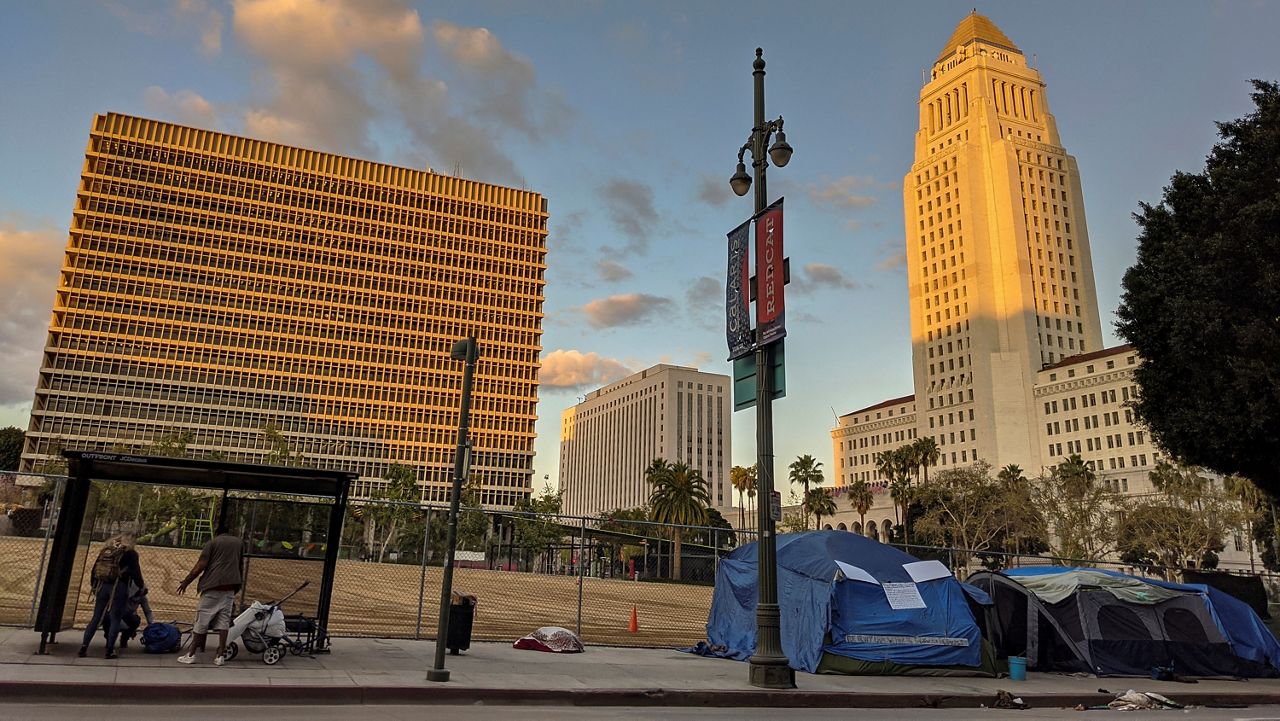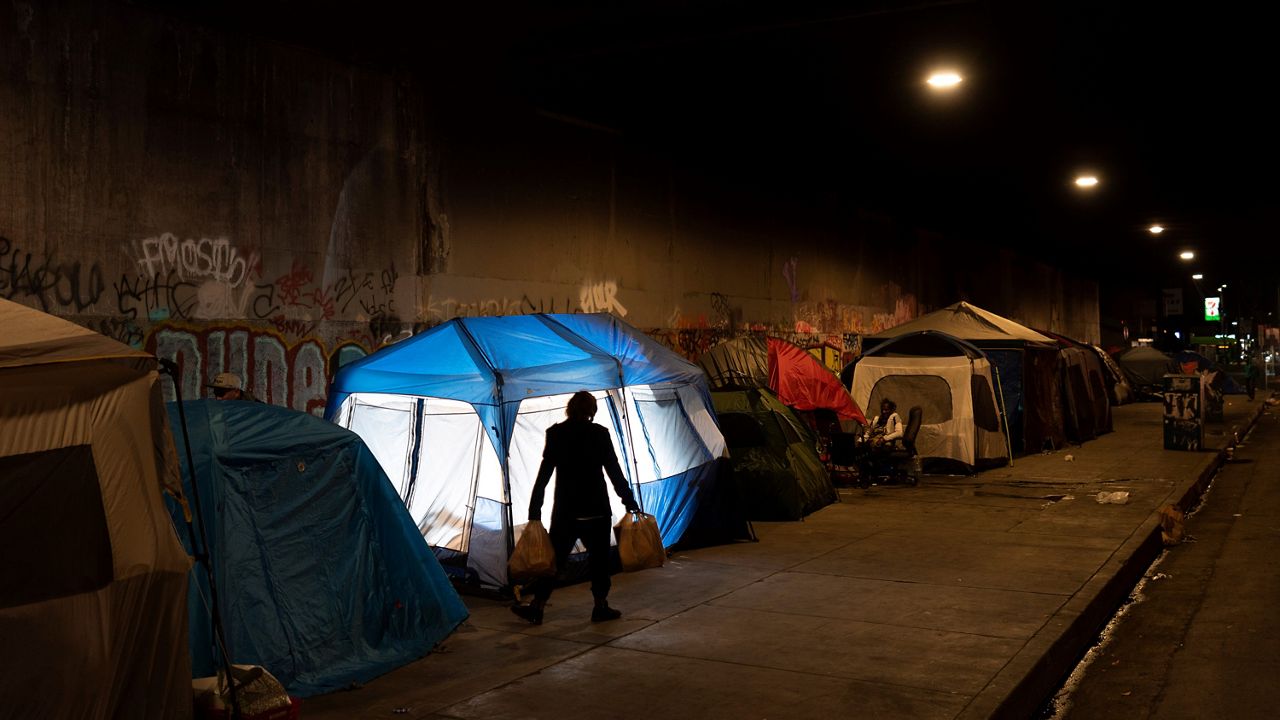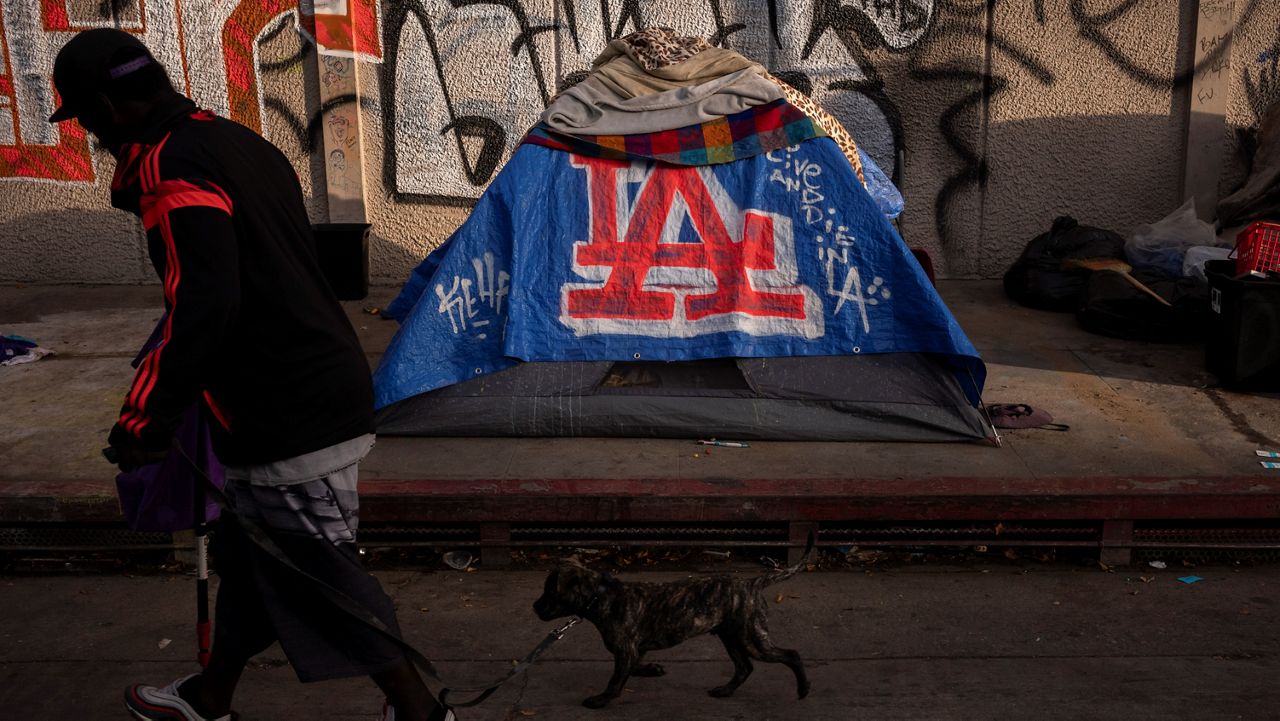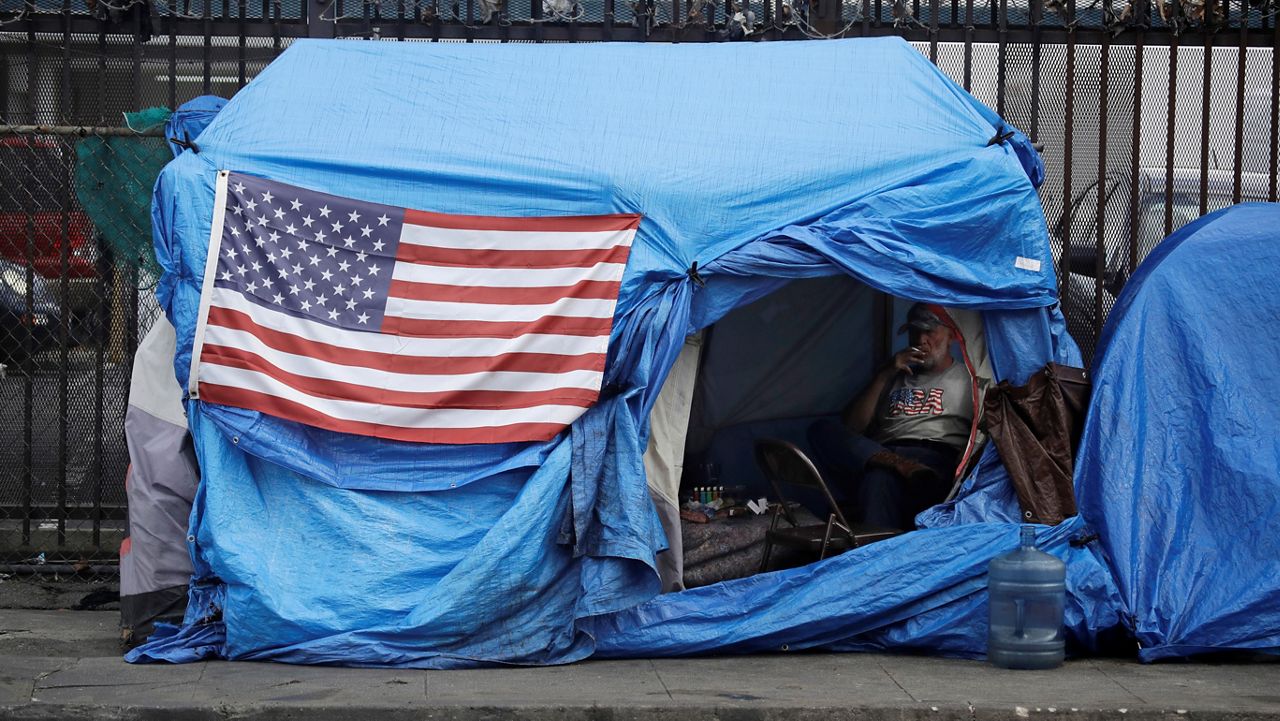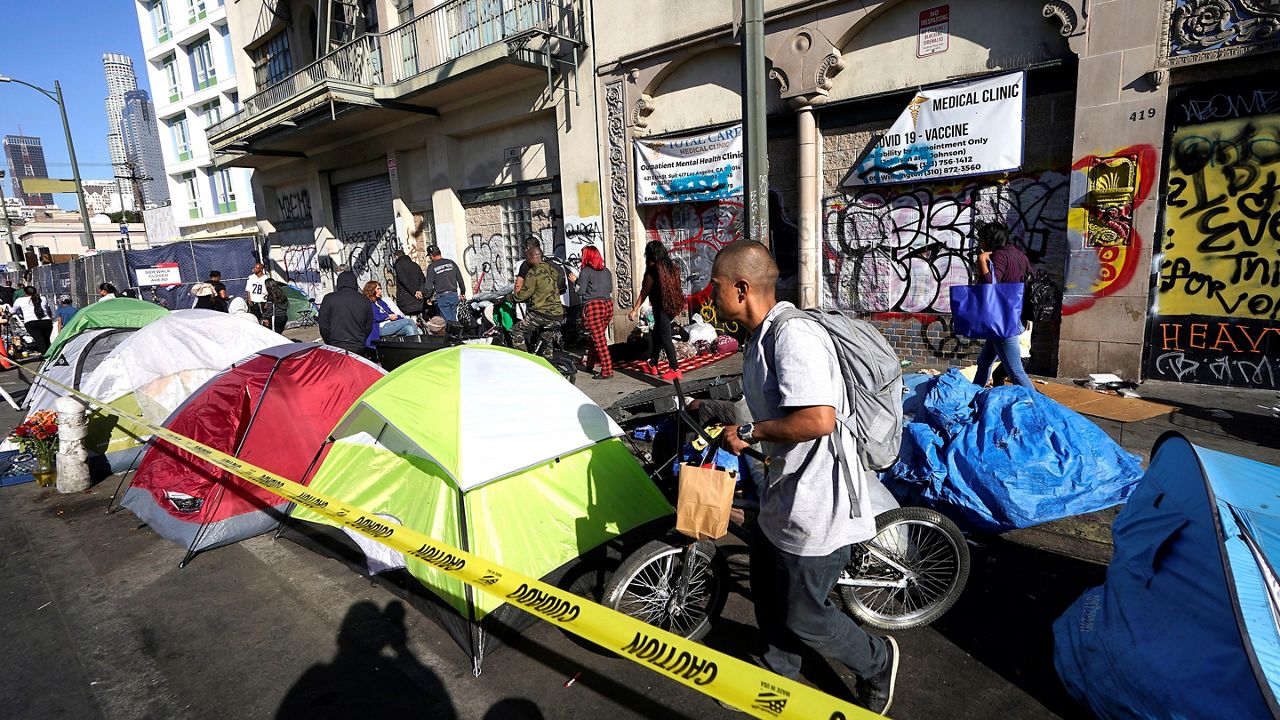LOS ANGELES — Los Angeles officials Wednesday questioned the findings of a report that suggested efforts to reduce homeless encampments in three neighborhoods provided only temporary relief.
What You Need To Know
- In findings published earlier this month, the nonprofit Rand corporation studied three areas in Los Angeles — Hollywood, Venice and Skid Row — between 2021 and 2023
- Data showed that the unhoused population stabilized over that period, while the annual rate of growth was approximately 10% in prior years
- After taking office in 2022, Bass immediately launched her Inside Safe initiative, a program aimed at reducing tents and other encampments across city streets and bringing unhoused individuals into temporary housing
- Mayor Karen Bass, who is traveling to Paris, told local media that she wanted to contact the organization and challenge some of its findings
In findings published earlier this month, the nonprofit Rand corporation studied three areas in Los Angeles — Hollywood, Venice and Skid Row — between 2021 and 2023. Data showed that the unhoused population stabilized over that period, while the annual rate of growth was approximately 10% in prior years.
However, the study showed encampments removed in these areas were re-populated within two to three months on average. Data from 2023 found that more than half of individuals surveyed reported experiencing a chronic mental health condition, about half reported a chronic physical health condition, and a similar number reported a substance abuse disorder.
"Our findings for 2023 point to signs of progress in slowing the growth of unsheltered homelessness in these neighborhoods," Jason Ward, the report's lead author and an economist at the Santa Monica-based think tank, said in a statement issued with the findings. "This is consistent with programs like Inside Safe and the increasing supply of both permanent and interim housing resources making a dent in the problem."
He added, "However, we found evidence that the unsheltered residents remaining on the streets may have higher needs and greater levels of vulnerability on average."
The study, called the Los Angeles Longitudinal Enumeration and Demographic Survey (LA LEADS) Project, is conducted by the research organization's professional survey staff.
The first count was done every two weeks from September 2021 to January 2022 in Skid Row and every month in Venice and Hollywood, three communities known for having persistently large numbers of unhoused residents.
This second LEADS report includes results from counts done every two months in the three communities in 2023. Researchers also surveyed more than 200 unsheltered people across the three neighborhoods during August and October of 2023.
"Our 2023 results are suggestive of a possible leveling off in the growth of unsheltered homelessness, but assessing the stability of this trajectory is complicated by an increase in large encampment clearances through Inside Safe and other related events, which we observe to temporarily reduce the number of people living unsheltered in a neighborhood," the report reads. "This reduction is followed by a reversion toward previous levels within two to three months. This pattern has been particularly pronounced in Venice, where the largest and most-frequent encampment clearings occurred in 2023."
Mayor Karen Bass, who is traveling to Paris with first lady Jill Biden as part of a presidential delegation for the Olympic Games, told local media that she wanted to contact the organization and challenge some of its findings.
"What we have found, what our experience is, is that encampments might repopulate, but it's not the same people, and so I really question that," Bass told the station. "And so one of the things that we have found, is that when we clear an encampment, unhoused people know that it was cleared, and they know very well that if they show up and pitch a tent where an encampment has been cleared that they will have a high possibility of getting housing. So I challenge that part of the study, and I look forward to talking to Rand."
After taking office in December 2022, Bass immediately launched her Inside Safe initiative, a program aimed at reducing tents and other encampments across city streets and bringing unhoused individuals into temporary housing.
Councilwoman Traci Park, who represents the 11th District, which includes Venice, also criticized the report. However, Park did recognize three data points from the study that she said she's also heard anecdotally — that the unhoused population in the 11th District are predominately white, less likely to be looking for housing and were less likely to have been last housed in California.
"It may well have been the case in 2021 and 2022 under the prior administration that there were serious issues in Venice with repopulation after encampments were cleared," Park said. "However, that has not been the trend in 2023 or into 2024 since I took over CD 11."
Park said her team and the city have been successful in housing more than 500 people living on the streets in West LA, and provided assistance to individuals who were well enough to accept it. The councilwoman says they've been "very successful" in getting those individuals into housing.
"I take issue with any suggestion that re-population has occurred on my watch," Park said. "Part of the reason for my success in keeping those areas clear is because in places where I am allowed to use our daycare, schools and parks ordinance, which is section 41.18, (it) has helped manage repopulation issues, as well as our ongoing extensive outreach and engagement with individuals."
According to the most recent Greater Los Angeles Homeless Count, the total number of people experiencing homelessness in the area dropped slightly in 2024. Hundreds of volunteers conducted the count, a point-in-time survey, from Jan. 24-26.
Results showed 75,312 unhoused people in the county in 2024 compared to 75,518 in 2023, a dip of 0.27%. In the city of LA, the number of unhoused individuals dropped to 45,252 compared to 46,260 in 2023, a drop of 2.2%.






